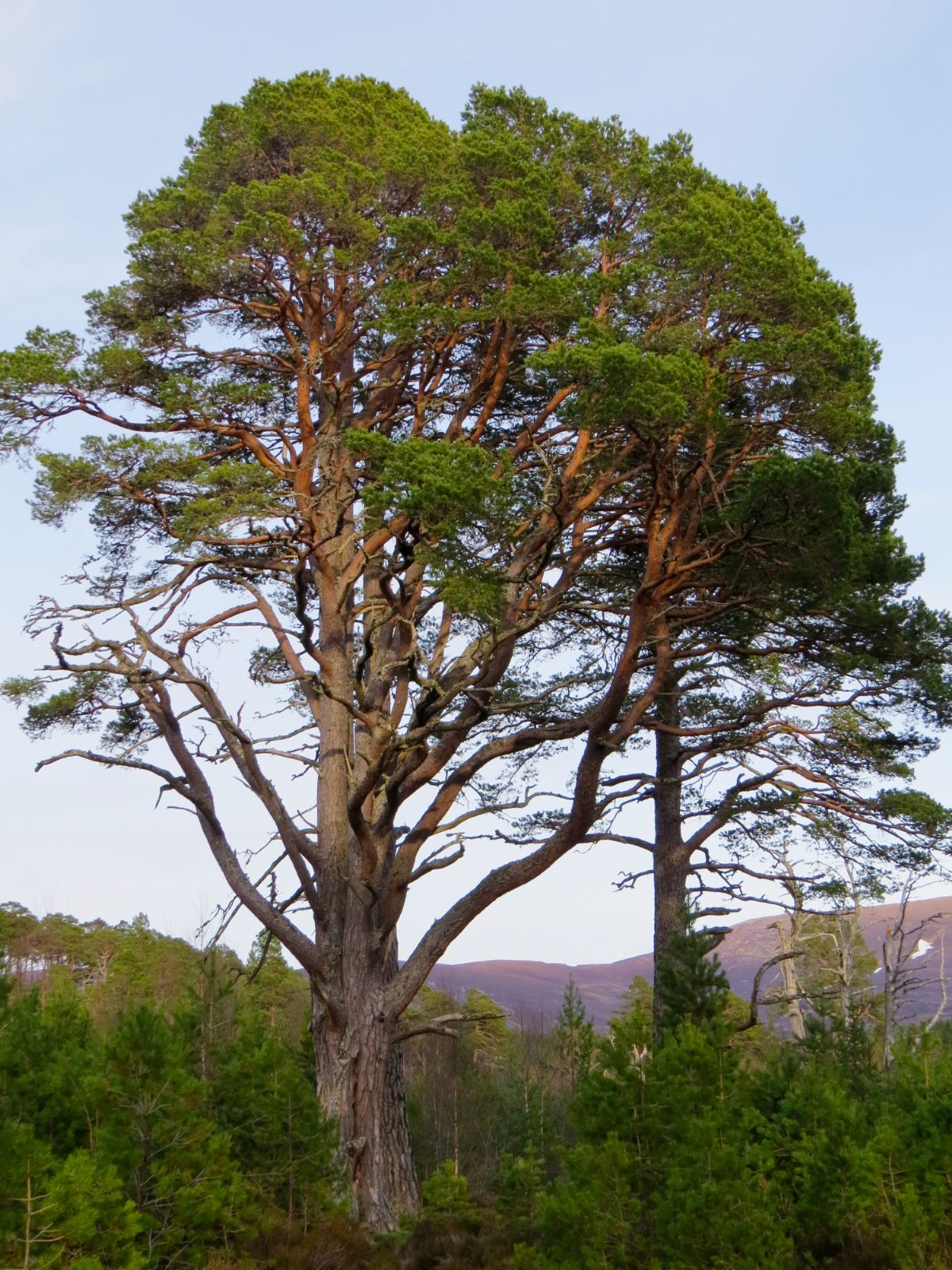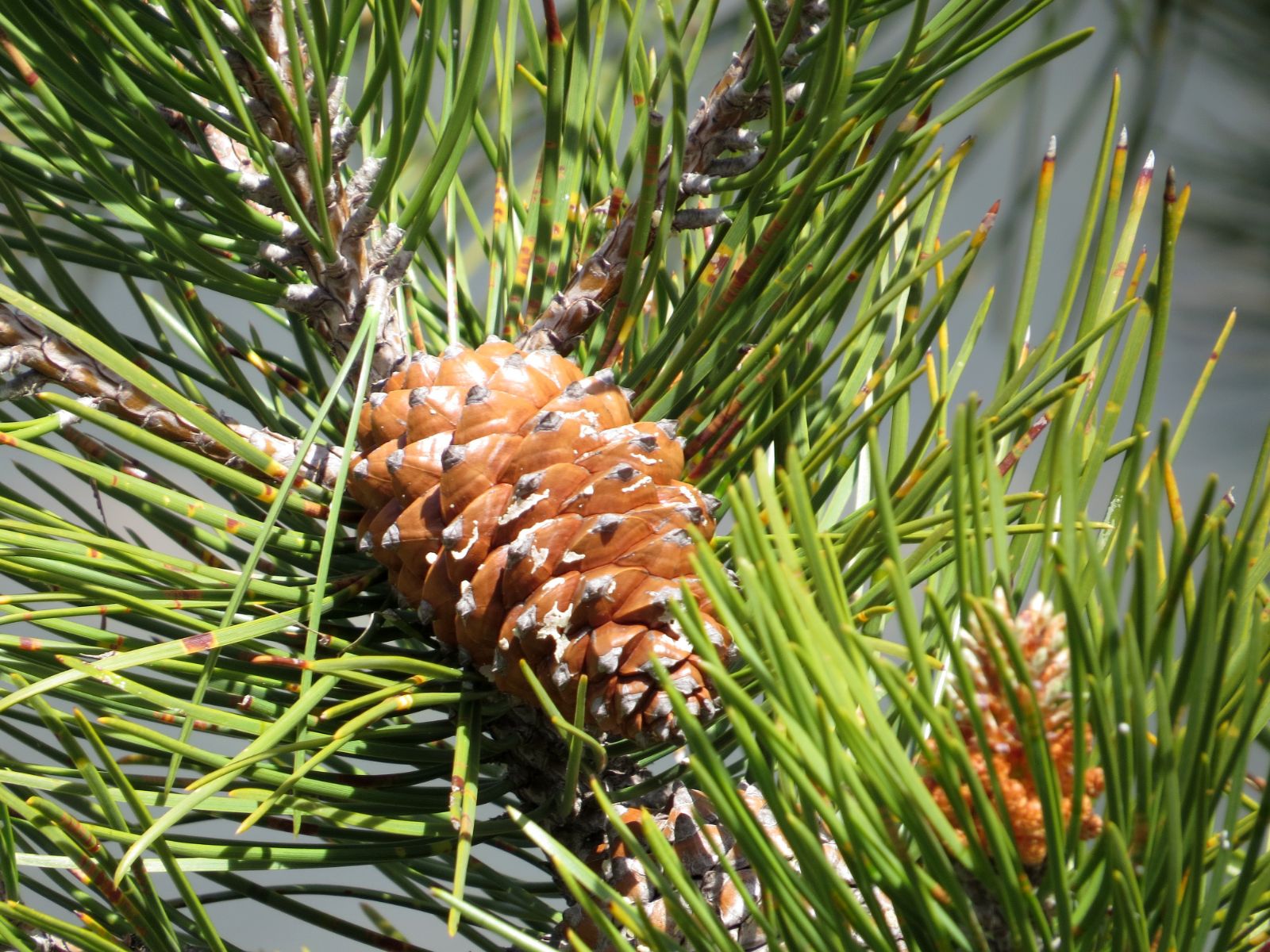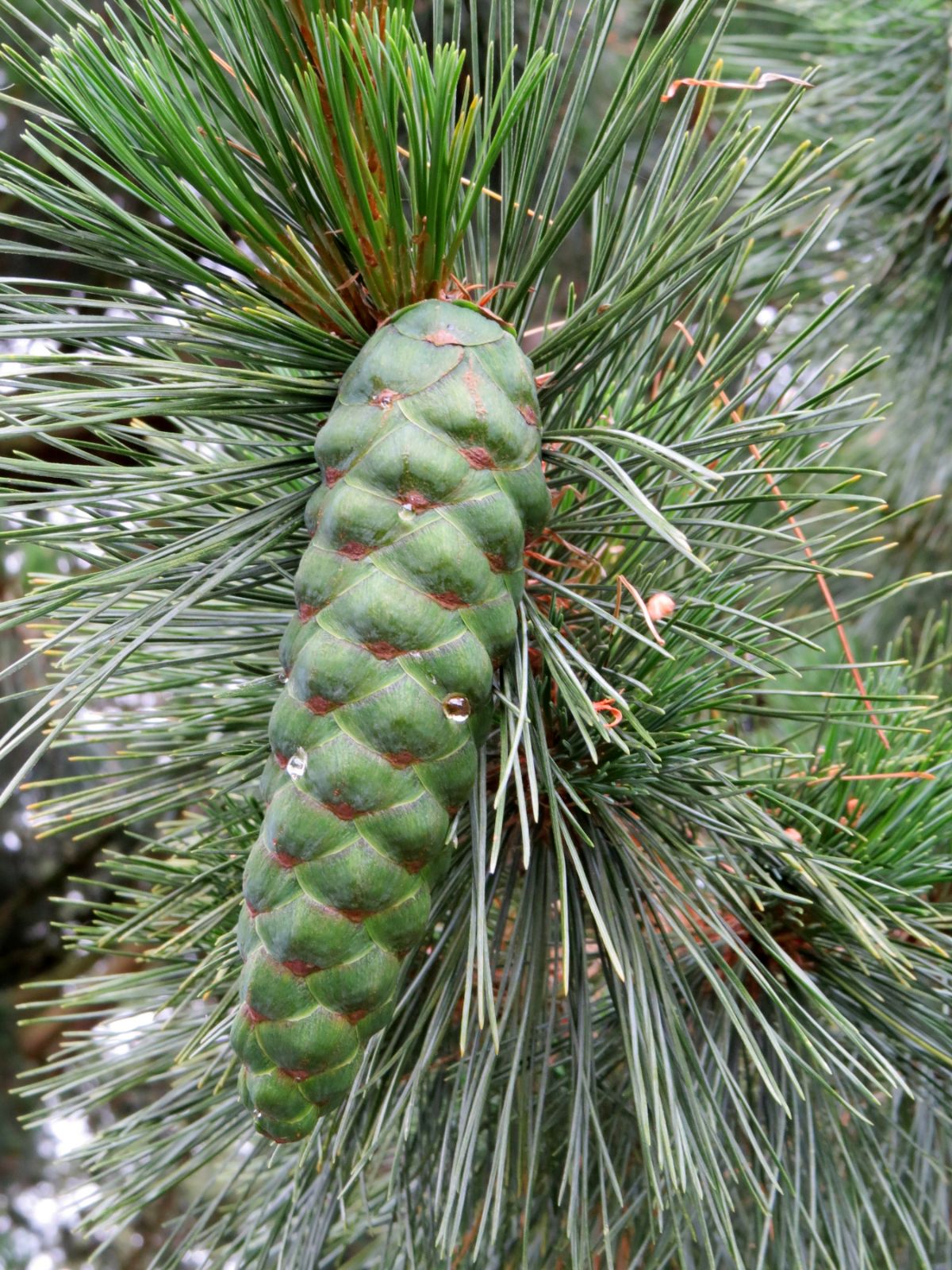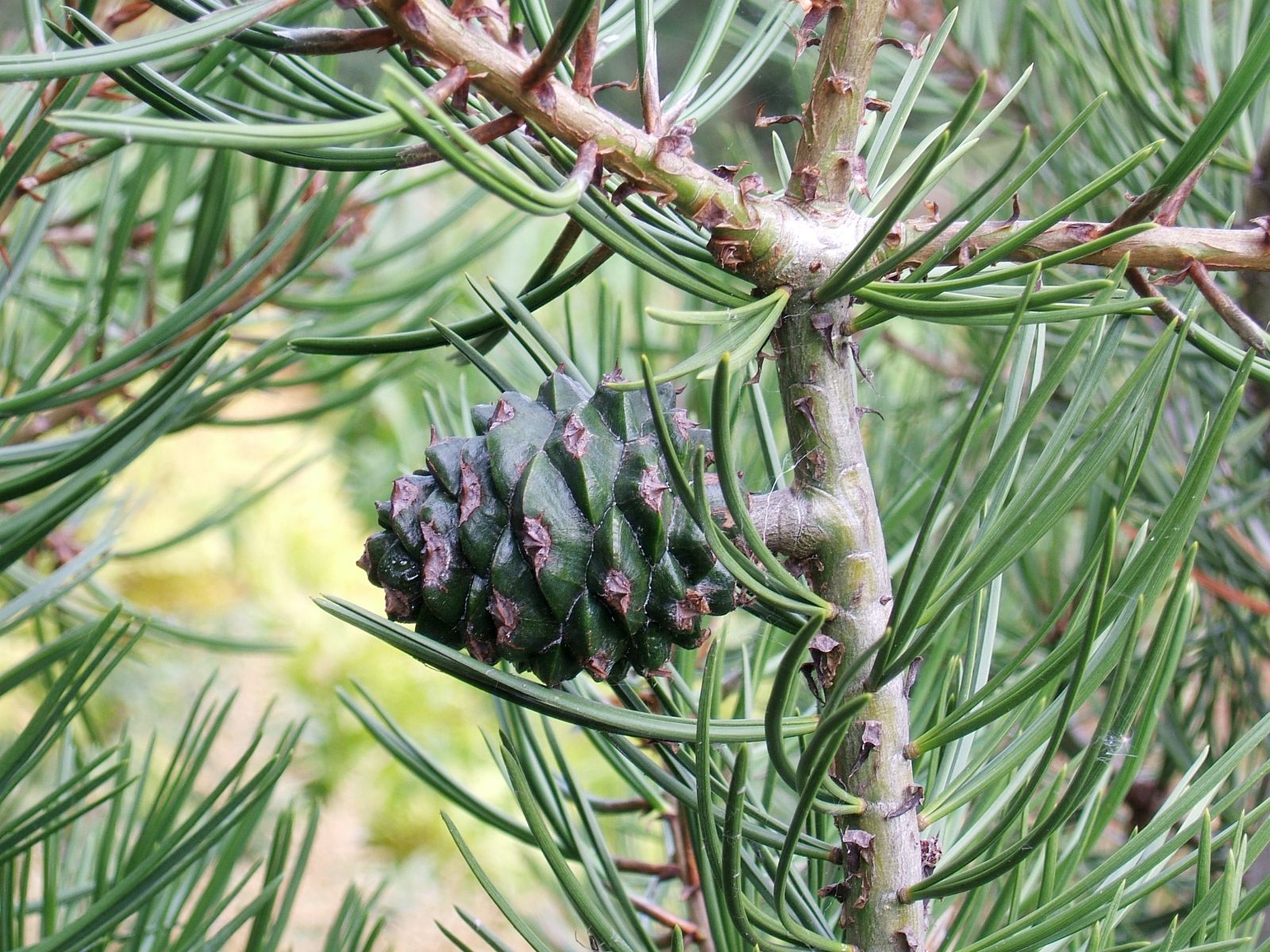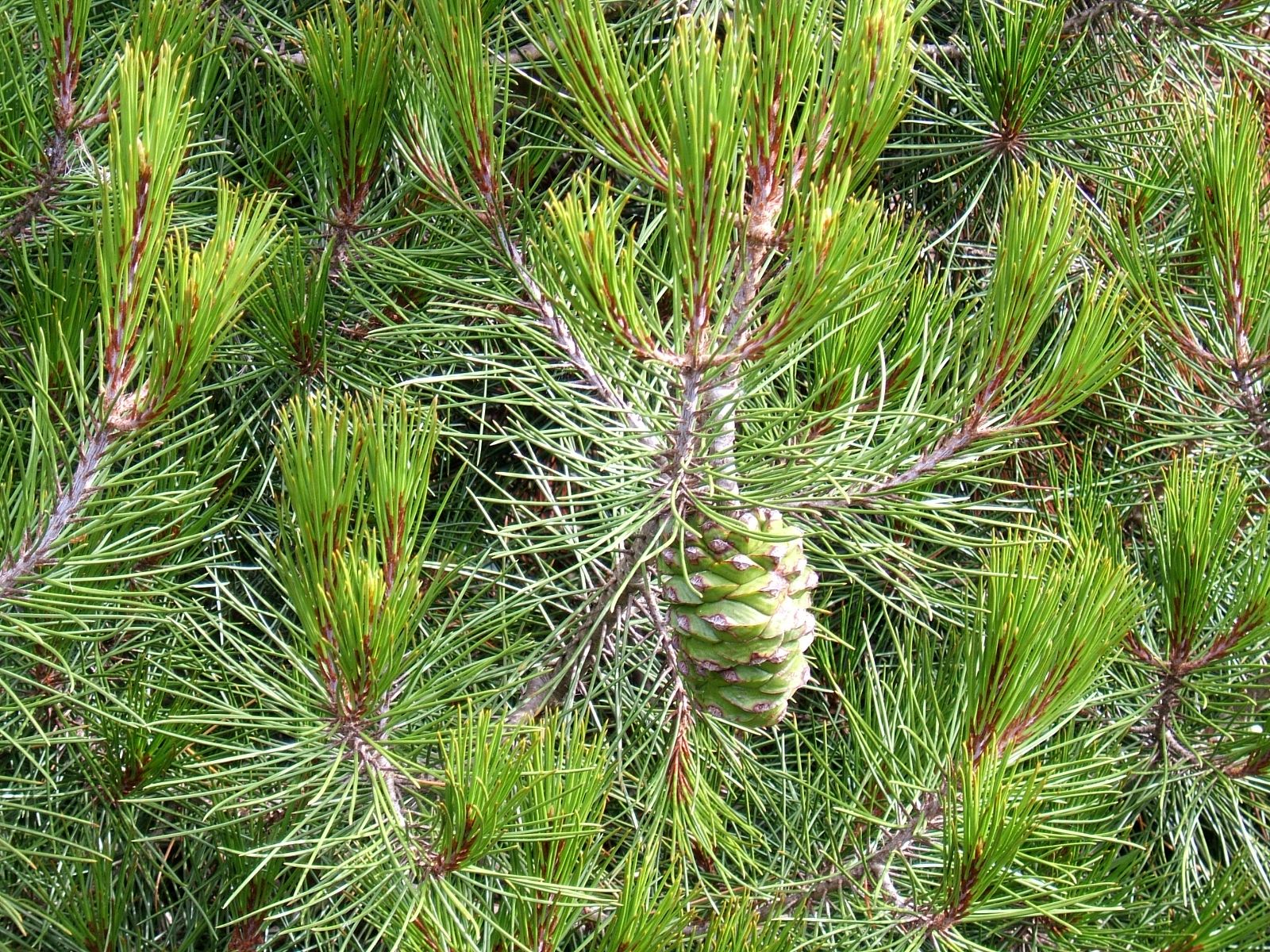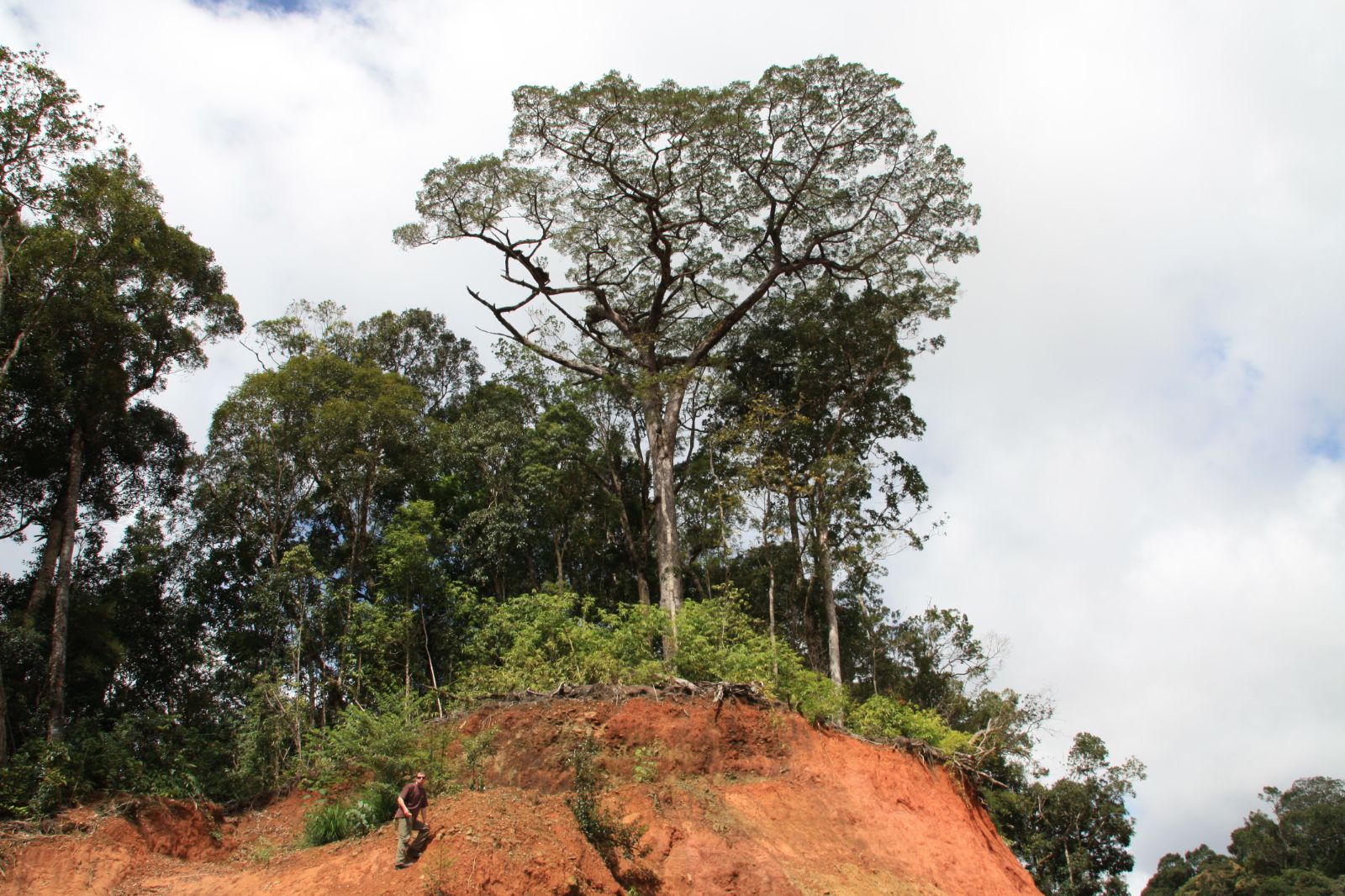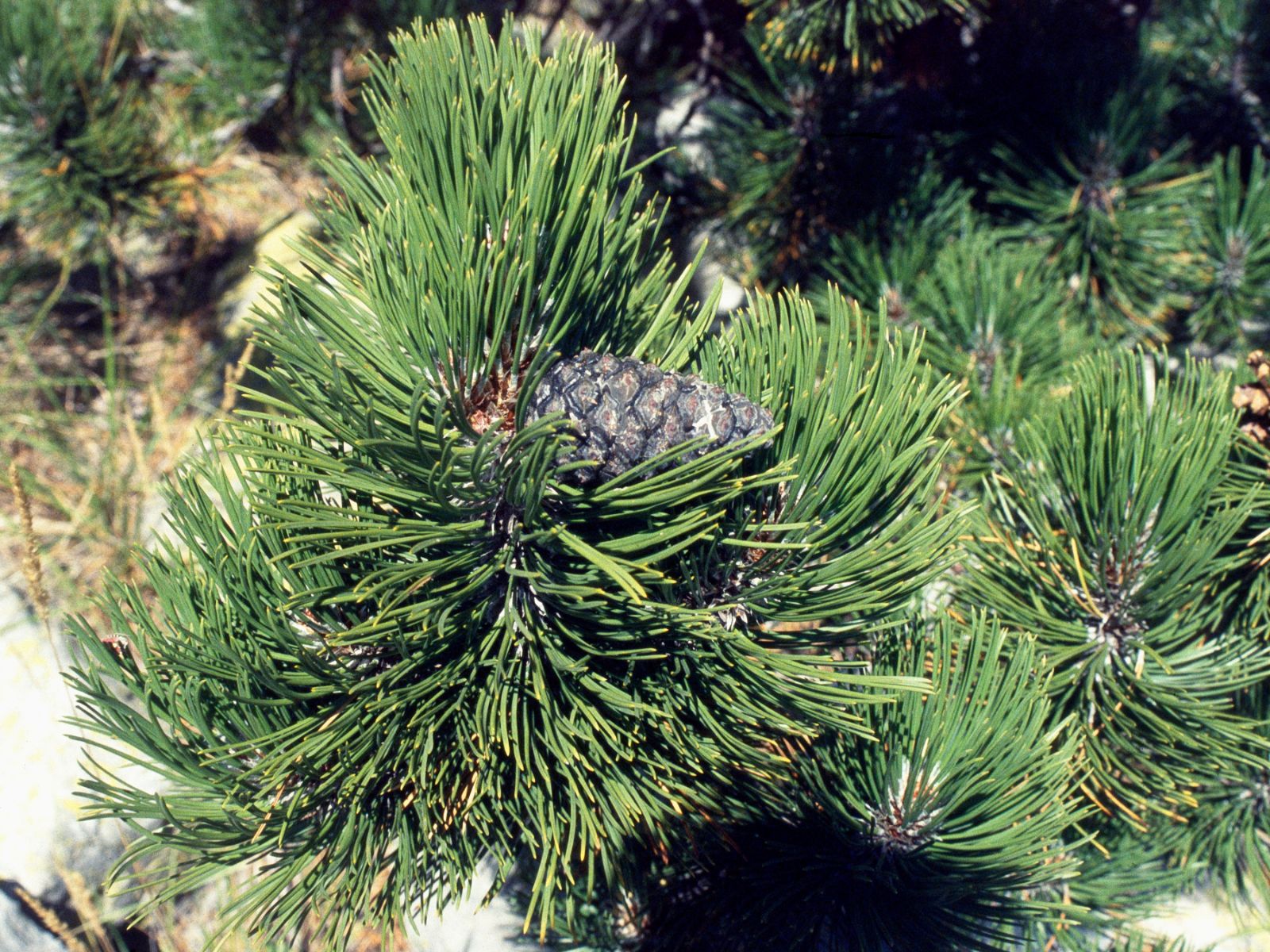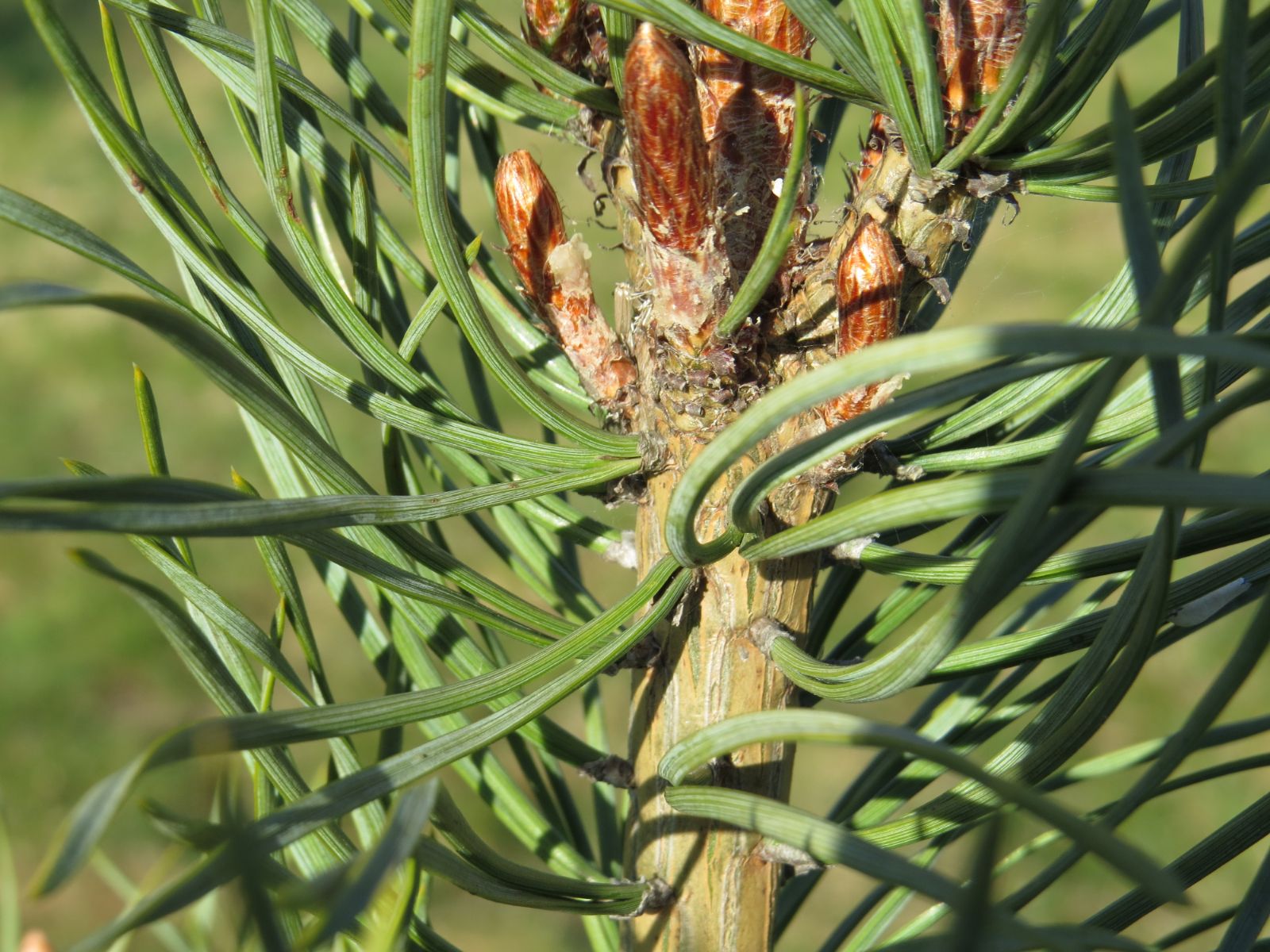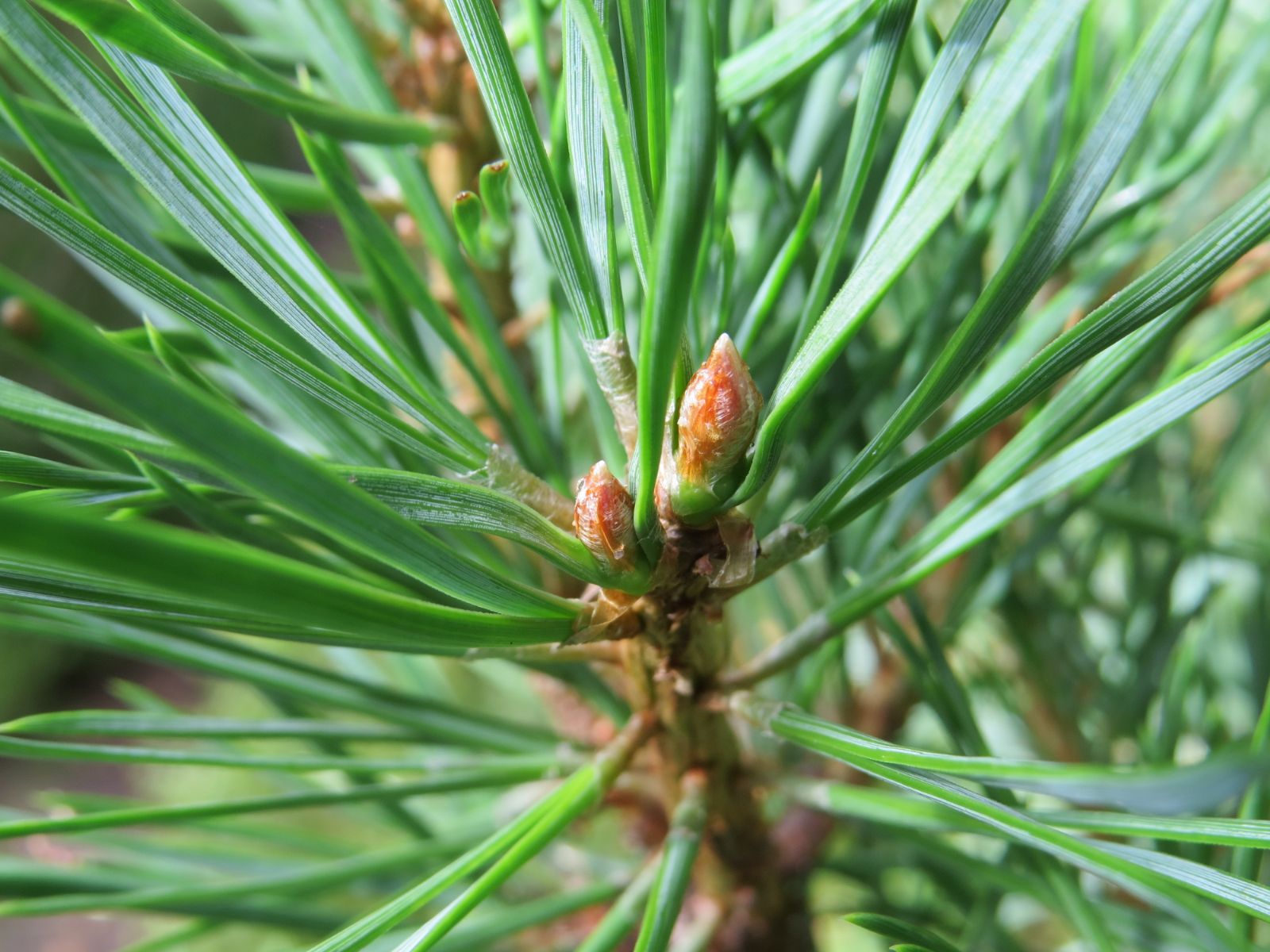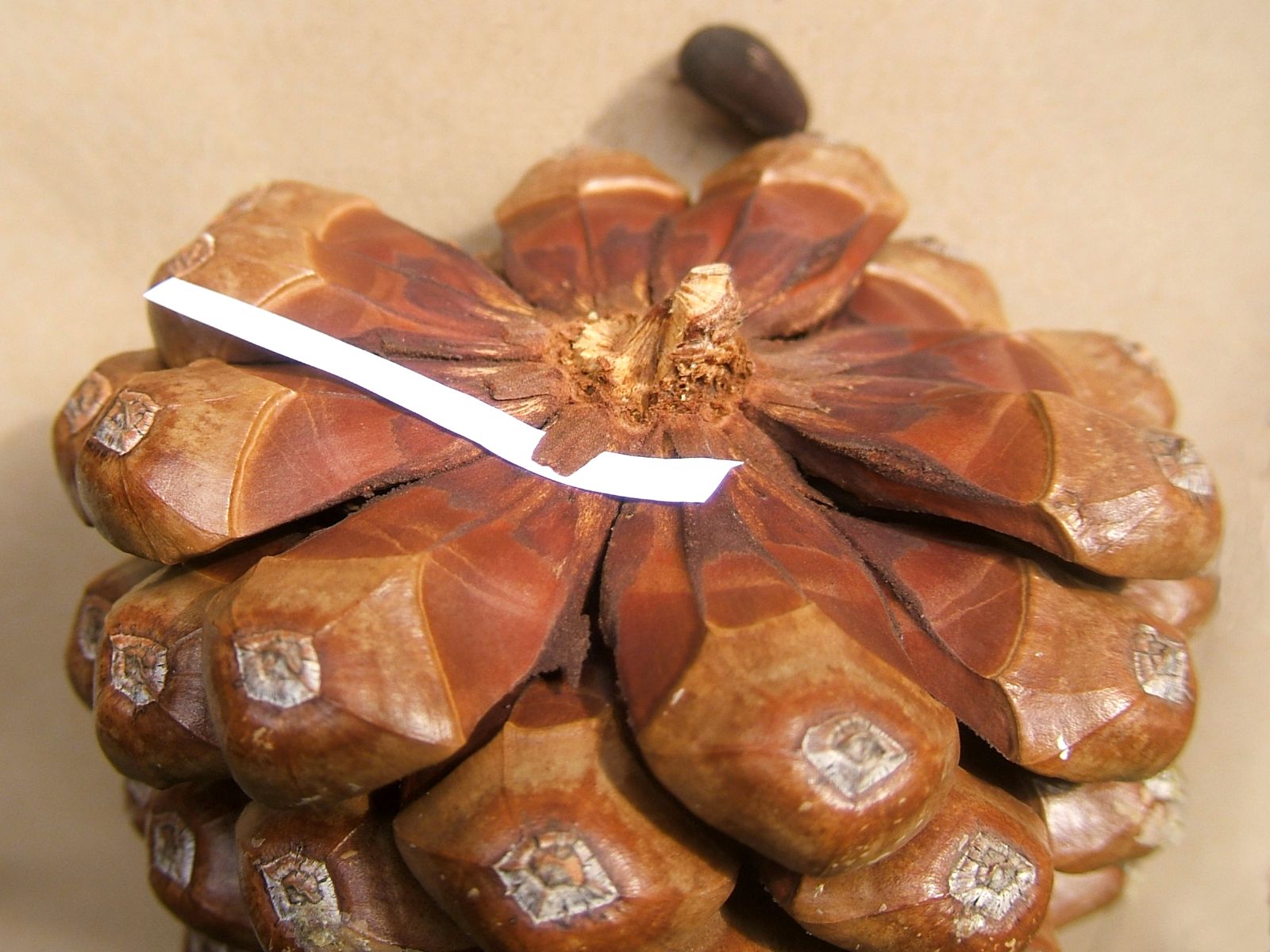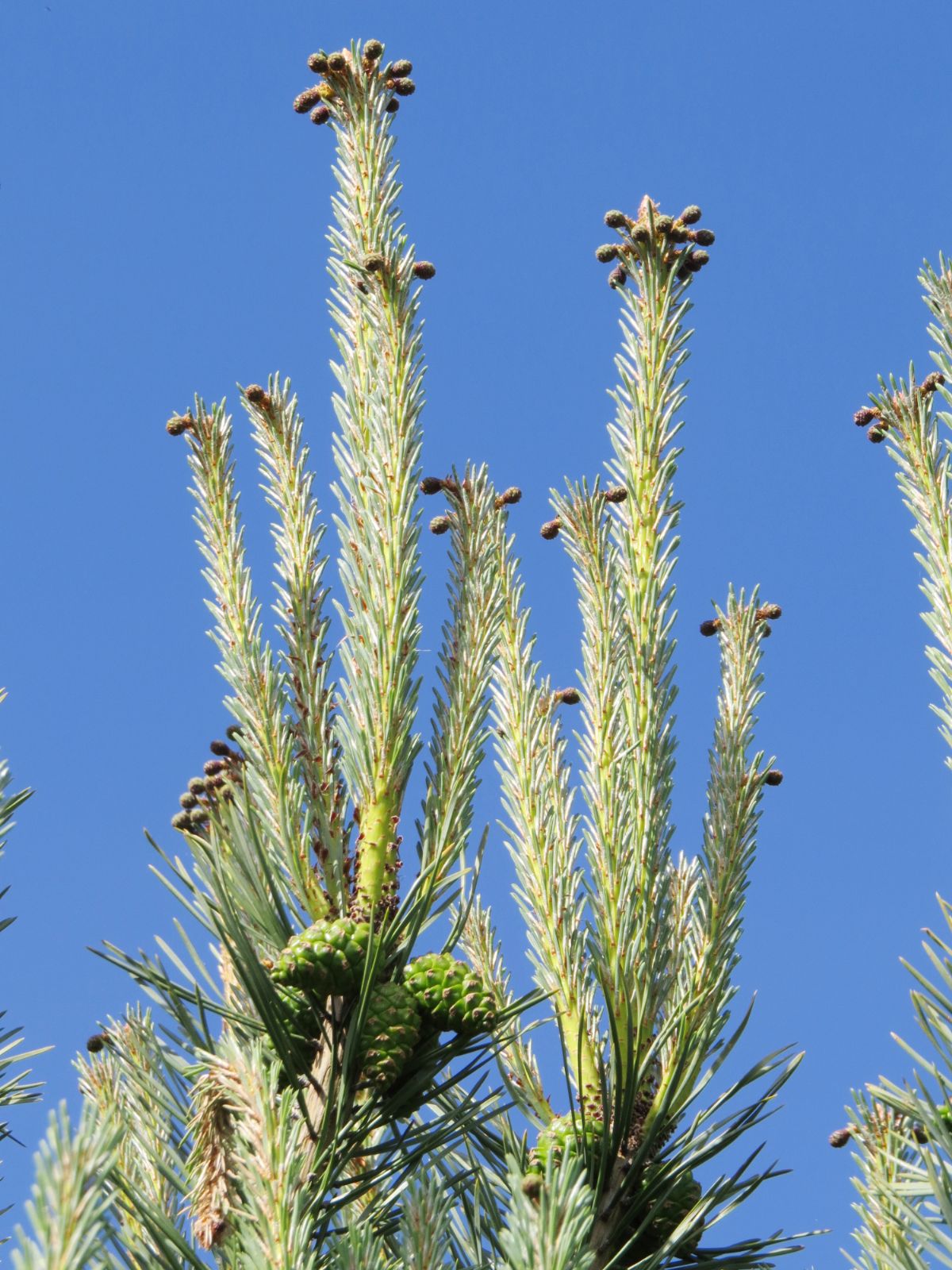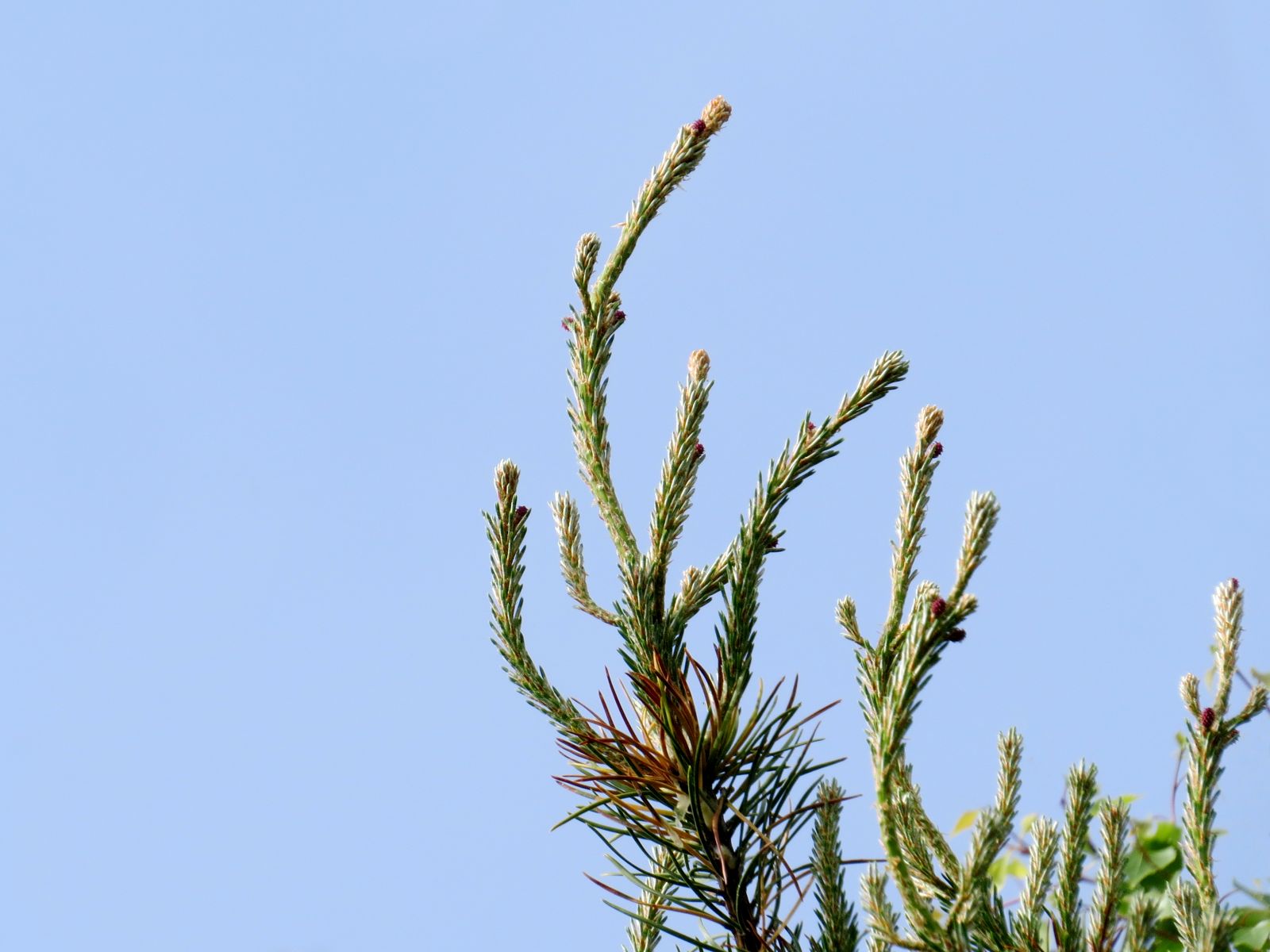Pinus
Credits
Article from Bean's Trees and Shrubs Hardy in the British Isles
Article from New Trees by John Grimshaw & Ross Bayton
Recommended citation
'Pinus' from the website Trees and Shrubs Online (treesandshrubsonline.
Family
- Pinaceae
Common Names
- Pine
- Pin
- Pino
- Kiefer
- Fyr
- Tall
- Çam
- Бор
- Сосна
- Πεύκο
- マツ属
- 松屬
- 소나무속
Species in genus
- Pinus albicaulis
- Pinus arizonica
- Pinus armandii
- Pinus attenuata
- Pinus ayacahuite
- Pinus balfouriana
- Pinus banksiana
- Pinus bhutanica
- Pinus brutia
- Pinus bungeana
- Pinus canariensis
- Pinus cembra
- Pinus cembroides
- Pinus chiapensis
- Pinus contorta
- Pinus coulteri
- Pinus culminicola
- Pinus densata
- Pinus densiflora
- Pinus devoniana
- Pinus durangensis
- Pinus echinata
- Pinus edulis
- Pinus elliottii
- Pinus engelmannii
- Pinus eremitana
- Pinus flexilis
- Pinus gerardiana
- Pinus greggii
- Pinus × hakkodensis
- Pinus halepensis
- Pinus hartwegii
- Pinus heldreichii
- Pinus henryi
- Pinus × holfordiana
- Pinus hwangshanensis
- Pinus jeffreyi
- Pinus johannis
- Pinus koraiensis
- Pinus lambertiana
- Pinus leiophylla
- Pinus longaeva
- Pinus massoniana
- Pinus maximartinezii
- Pinus monophylla
- Pinus montezumae
- Pinus monticola
- Pinus morrisonicola
- Pinus mugo
- Pinus muricata
- Pinus nelsonii
- Pinus nigra
- Pinus oocarpa
- Pinus orizabensis
- Pinus palustris
- Pinus parviflora
- Pinus patula
- Pinus peuce
- Pinus pinaster
- Pinus pinceana
- Pinus pinea
- Pinus ponderosa
- Pinus pseudostrobus
- Pinus pumila
- Pinus pungens
- Pinus quadrifolia
- Pinus radiata
- Pinus remota
- Pinus resinosa
- Pinus rigida
- Pinus roxburghii
- Pinus sabiniana
- Pinus serotina
- Pinus sibirica
- Pinus strobiformis
- Pinus strobus
- Pinus sylvestris
- Pinus tabuliformis
- Pinus taeda
- Pinus taiwanensis
- Pinus teocote
- Pinus thunbergii
- Pinus torreyana
- Pinus virginiana
- Pinus wallichiana
- Pinus wangii
- Pinus yunnanensis
Editorial Note
Like many other genera treated in this work the existing accounts for Pinus are based on two main sources: Trees and Shrubs Hardy in the British Isles (Bean 1976) and New Trees (Grimshaw & Bayton 2009). A full-scale revision of this large, complex and important genus is urgently needed, but will take time and require significant funding.
Fortunately, thanks to a generous donation to Trees and Shrubs Online, we are in a position to begin work in late 2023 to restructure the existing Pinus articles to reflect the latest taxonomic thinking and to ensure the correct names are being used. At the same time, we will update and standardise all the botanical descriptions, distribution data and habitat notes, and provide a new key to species cultivated in our study area. This work will be broken down by the subsections into which the genus is usually divided; updated articles will be published in batches once all members of a given subsection are complete. We expect this work to be complete for the whole genus in late 2024. In the meantime, regular users may notice frequent changes or anomalies within the existing articles and article structure – we will endeavour to keep these to a minimum but ask for your patience and understanding.
At the end of this process the horticultral discussion associated with each article will still require updating. This is another enormous task and one for which we currently have no funding available. If you are in a position to support this element of the Pinus revision the editors would be glad to hear from you.
TC, October 2023.
Pinus is the largest conifer genus, with 110 species accepted by Farjon (2005a), while Businský (2008) recognises 116 – and others would acknowledge more. It is almost entirely restricted to the northern hemisphere, crossing the equator only in Sumatra (P. merkusii). Unlike the other genera of the Pinaceae, in Pinus the greatest diversity of species is found in the United States and Mexico, rather than in China and Japan. As with many conifer genera there are a few taxa that are widespread (P. sylvestris has the widest distribution), while most have a restricted range. Pinus is economically the most significant genus of conifers, the primary products being timber, pulp, tar and turpentine. Several attempts have been made to divide it into a number of smaller genera (including Strobus Opiz, Caryopitys Small and Ducampopinus A. Chev.), but the segregate genera have not received broad recognition. The morphology of Pinus is complex, and a number of botanical terms are applied only to it and a few related genera. These terms are defined in the glossary at the end of this book and also illustrated in Figures 67 and 68 (see below, pp. 581, 601). The lengthy descriptions given for the pines covered in the pages that follow are an inevitable consequence of this complexity, and details are critical to the identification of species.
The habit of pines is extremely variable, plants ranging from large, monopodial trees to small, multistemmed shrubs, although environmental factors account for some of this variation. For example, Pinus torreyana in its native habitat is only 5–10 m tall and forms a short, gnarled trunk. In cultivation, however, it can become a large tree with a straight trunk of 30 m or more. The largest pine is the stately P. lambertiana, which can grow up to 75 m tall with a stem diameter of almost 4 m. In very cold and dry climates the growth rate is extremely slow, allowing some trees to reach advanced ages.
The bark of pines is frequently useful in identifying species. It can break into small or large plates, form deep, longitudinal fissures, or peel continuously creating a mosaic pattern. It may begin to break and peel early in life, or may remain smooth for several years. In the lace-bark pines (P. bungeana, P. gerardiana and P. squamata) it resembles that of Platanus, as it peels off in segments revealing the lighter-coloured new bark below. Pines are evergreen and aromatic, and often have resin in the wood, bark, leaves and cones. The crown is initially conical with regular (pseudo-) whorls of branches and an erect leader, though some may also be multistemmed. At maturity several lower branches may be shed, forming a broad and open crown. There is strong shoot dimorphism, with branching shoots and reduced foliage (dwarf) shoots. The branching shoots are stout, and may be glaucous or pubescent. Branching shoots generally produce a single flush of growth each season, ending with a winter bud. The winter bud can be terminal or subterminal, and is composed of the shoot apex and new needle fascicles, covered by scale leaves; winter buds are prominent features of pines throughout the winter. In spring the winter bud elongates into a long rather bare-looking shoot on which the short foliage shoots are present as small growths; at this stage the new shoots are known as ‘candles’, and are held vertically. The new secondary leaves then emerge from the short shoots and the shoot assumes its normal position.
The foliage shoots are very small and comprise a bundle (fascicle) of secondary leaves with a persistent or deciduous sheath at the base; in lay terms they are the familiar clusters of ‘pine needles’. These foliage shoots do have a minute bud, though this develops only rarely, most typically after browsing damage to the shoot distal to the fascicle. Fascicles persist for 2–12 years or more and develop in the axils of cataphylls (see below). The secondary leaves within a fascicle remain attached to each other, usually falling as a single unit (except in section Quinquefolius, where the leaves may fall individually). The developing fascicle is terete (except in P. krempfii, where it is flattened) and contains several leaves, ranging in number from two to eight (a single leaf in P. monophylla), and the arrangement of the leaves as they develop in the fascicle determines the transverse shape of the individual leaves. The number of leaves in a fascicle is an important character in pine identification, though it can be subject to environmental influences (Yeaton et al. 1983). The needles may be epistomatic or amphistomatic, with the stomata arranged in longitudinal grooves that run the whole length of the leaf. The margins are usually entire, but may be serrate. Primary leaves are produced on shoots on young plants less than a year old (up to five years or more in a few species) but these are later replaced by cataphylls, which are scale-like, non-photosynthetic leaves. Cataphylls can have stomata on the upper surface (epistomatic), and form an elevated pulvinus (decurrent or non-decurrent) at the base. They may be shed before the needles or persist long afterwards.
The male strobili are oblong to cylindrical and are clustered at the basal end of new long shoots. The female strobili (cones) are subterminal, solitary or clustered, and pendulous. They are sessile or pedunculate, and mature in the second or third year. The cones may be persistent or shed early, and may be serotinous, opening only after a fire. The seed scales are imbricate, spirally arranged around a central rachis, persistent, thin or woody. The exposed apex of the scale in a mature, closed cone (the apophysis) bears the remnant portion of the exposed scale that developed in the first year (umbo); in species where maturity occurs in the third year (for example, P. pinea), the umbo shows a second concentric ring. The umbo is located in a dorsal or terminal position and may have a spine or prickle. In subgenus Pinus there is a narrow sealing band on the scale stem at the base of the apophysis, which when present is often conspicuous by its different colour and smoother surface compared to the rest of the scale stem. Bract scales are insignificant and included (longer and rarely slightly exserted in P. torreyana). There are two seeds on each scale, partially enclosed in a membranous cup, which extends to form a persistent triangular wing. The wing may be vestigial and ineffective, as is often the case in species where the seeds are distributed by birds (in Pinus by jays and nutcrackers, amongst others).
Pinus L.
A guide to the infrageneric classification of Pinus
| Subgenus Pinus – Hard pines | Section Pinus (e.g. P. sylvestris) |
| Cone scales with a sealing band | Leaves in fascicles of two to three |
| Pulvini decurrent | Europe, Asia (two species in North America) |
| Leaves with two vascular bundles | |
| Fascicle sheath persistent (deciduous in P. leiophylla, P. lumholtzii) | Section Trifolius (e.g. P. radiata) |
| Leaves in fascicles of two to five (or more) | |
| Seed wings articulate (rarely weakly adnate) | North America, Central America |
| Subgenus Strobus – Soft pines | Section Nelsonia (P. nelsonii only) |
| Cone scales without a sealing band | Leaves in fascicles of three, partially united on ventral surfaces |
| Leaves with one vascular bundle | |
| Fascicle sheath persistent | |
| Umbo dorsal, obscure | |
| Seeds large, wingless | |
| Northeast Mexico | |
| Section Parrya (e.g. P. edulis) | |
| Leaves in fascicles of one to five | |
| Fascicle sheath semi-deciduous, leaving a basal rosette (deciduous in P. pinceana) | |
| Umbo dorsal | |
| Pulvini variably decurrent or not | |
| Seed wings articulate | |
| North America | |
| Section Quinquefolius (e.g. P. wallichiana) | |
| Leaves in fascicles of five (of two in P. krempfii, of three in P. bungeana, P. gerardiana, of four to five in P. squamata) | |
| Fascicle sheath deciduous | |
| Umbo terminal (dorsal in the above four species) | |
| Pulvini not decurrent | |
| Seed wings strongly adnate (articulate in the above four species) | |
| Eurasia, North America |
Many pines show adaptations that allow them to survive and even benefit from fires: thick bark can protect the cambium from heat, and serotinous cones release their seeds only after being scorched (Agee 1998). In a few pines, such as P. palustris, shoot elongation in the seedling is delayed while the leaves and roots expand, resulting in seedlings that look like tufts of grass (the ‘grass stage’). This protects the seedling from rapid grass fires by sacrificing the highly flammable leaves, reducing the exposure of the rest of the plant to heat. After a few years the tree then grows rapidly, to escape as soon as possible from low-level fires. Several pine species can regenerate from epicormic shoots beneath the bark (Agee 1998).
Sources that were important in the preparation of the following accounts include published works on the genus Pinus (Richardson 1998, Anon. 2002, Farjon 2005a), together with regional accounts of pines in Mexico and Central America (Perry 1991, Farjon et al. 1997, Farjon & Styles 1997), North America (Elias 1980, Thieret 1993, Preston & Braham 2002), Eurasia (Businský 1999), and China and Taiwan (Li & Keng 1994a, Fu et al. 1999c), and the website The Gymnosperm Database (www.conifers.org) produced by C.J. Earle. Most of these have good illustrations, but the monograph Pines by Aljos Farjon (2005a) can be singled out for the quality of its drawings of mature trees and details of their foliage and cones, as can papers by Businský (1999, 2003, 2004) for the remarkable detail of the drawings of cones and seeds. Roman Businský has recently (2008) reviewed all his studies of pines, and has produced keys to the entire genus – in Czech only at present, alas, but an English version is planned. Our accounts have also benefited greatly from generous input from Michael Frankis and Keith Rushforth.
The classification of pines is difficult, but molecular studies are beginning to be applied to attempt its elucidation (Price et al. 1998, Gernandt et al. 2005, Syring et al. 2005, Syring et al. 2007). It is clear that the genus divides on genetic characters into two subgenera, subgenus Pinus (hard pines) and subgenus Strobus (soft pines), that are monophyletic and could validly be regarded as separate genera on genetic criteria, were it not for the evident unity of the genus as a whole. The subgenera can be further divided into sections, subsections and series, where things become more complicated and less well agreed upon, although in general the species form easily recognised groups. The studies cited above have resulted in several transfers between sections and subsections, most notably the lace-bark pines from section Parrya (to which they are closer in morphology) to section Quinquefolius (to which they are closer in genetics). At the specific level, some conifer specialists perceive similarities across a range of variation, while others detect differences. We tend here to follow Farjon’s (2001, 2005a) broad-brush approach, with some emendation in the light of the above molecular studies and more recent publications.
There are few genera of which it can be said that there is a species for all conditions in any garden, but this is almost true for Pinus, the only situation they universally dislike being heavy shade (although most require good drainage). While there are smaller and even shrubby species, however, the majority of pines are large trees, suitable only for larger spaces. They have major importance in the landscape, contributing different shapes and shades of green, contrasting well with broadleaves and more columnar conifers alike. This was recognised by Victorian planters, in whose relict pineta many venerable pines survive – now in an often picturesque maturity or old age – but has since been overlooked. Unfortunately, today pines seem to be even more out of fashion than most conifers as horticultural subjects. The commoner species continue to be planted in landscaping projects, as windbreaks and for forestry purposes – the latter activity in particular tending to stigmatise all conifers through their association with ‘alien’ gloomy plantations, at least in the United Kingdom. Furthermore, and unlike in Abies and Picea, young trees of Pinus are often not particularly attractive, their beauty developing only with maturity. As already mentioned, they are also potentially very large trees, for which few gardens would have sufficient space. Only in the form of ‘dwarf’ cultivars do they seem to retain popularity, as a quick glance at the RHS Plant Finder will reveal. Although the rarer species may not be regularly available they should be sought and their cultivation encouraged.
Particularly good collections of pines can be found in the holdings of Kew, the Royal Botanic Garden Edinburgh (especially at Benmore), Bedgebury National Pinetum, and the Sir Harold Hillier Gardens, where there is a National Plant Collection of Pinus. A smaller National Plant Collection is held at Quinta Arboretum, Swettenham, Cheshire. It is more difficult to find good collections of pines in continental Europe, but useful starting points are Pinetum Anthoine, Jamioulx in Belgium, Pinetum Blijdenstein in the Netherlands, and Hørsholm Arboretum in Denmark. The University of California Botanical Garden at Berkeley and the Institute of Forest Genetics at Placerville, California have particularly interesting and diverse collections, but most arboreta have a good representation of the species that will grow in their conditions.
Many of the species described here are from Mexico and further south in Central America, where the diversity of pines is at its highest. Some have long been known in cultivation, as botanical exploration in the nineteenth century was much further advanced in Mexico than it was in Asia, and collectors sent back seed to fuel the Victorian conifer craze. From these and later collections several species have been in cultivation continuously for over 150 years – but only in a very few gardens, usually around the maritime fringes of western Europe. Recent collections, however, have made some of these more familiar, and current climatic conditions enable the more tender species to be attempted more widely, often with success. Many species remain unintroduced, or have been unsuccessfully introduced, and await the attentions of collectors. A notable horticultural absentee is Pinus lumholtzii B.L. Rob. & Fernald, which has a wide distribution in western Mexico. Seed has been introduced on at least two occasions (K. Rushforth 594, Jalisco, November 1984; Hjerting & Ødum 269, Chihuahua, October 1989) but it has not become established; Keith Rushforth (pers. comm. 2007) grew one tree to 2 m before it succumbed to Armillaria. It is superficially similar to P. patula but has exceptionally long, vertically pendent needles (15–)20–30(–40) cm long or more. The weeping appearance they give the tree has led to its local name of pino triste, the ‘sad pine’. Other potentially reasonably hardy Mexican species that have yet to be introduced or are not as yet established in cultivation include P. praetermissa Styles & McVaugh, from western Mexico (Jalisco, Nayarit, Sinaloa, and possibly southern Zacatecas) at altitudes of 900–1900 m. This taxon is related to P. oocarpa, and to P. stylesii Frankis ex Businský, from northeastern Mexico. The application of the latter name in July 2008 enables the few young trees in cultivation to be labelled. It is related to P. strobiformis, with which it has been confused (Businský 2008).
Species occurring further south into Central America become more marginal prospects in our area, although they are often attempted. One such is P. tecunumanii Eguiluz & J.P. Perry, which has a wide distribution in seasonally dry areas from southern Mexico south to Nicaragua. It has been collected throughout its range for extensive forestry trials in Australia, Africa and elsewhere with subtropical or tropical climates (Birks & Barnes 1995), but with the exception of a few trees at Berkeley, it seems not to have been tried as an ornamental tree; in foliage it is similar to its close relative P. patula. It has been attempted at Tregrehan but was killed by cold there (T. Hudson, pers. comm. 2007). Seed of P. maximinoi H.E. Moore was sent to the Royal Botanic Garden Edinburgh from Guatemala in 1993. Seedlings were distributed from there to warmer sites, but it was promptly killed by frost at Tregrehan. More recently, seed of the same species collected by the Dendrological Atlas Project in Guatemala (DAP 40501X) has been received and grown on at Bedgebury; a number of young plants are growing there and others have been distributed elsewhere, including to Wakehurst Place, but it is very unlikely to be hardy in our area.
Several of the Asian pines are extremely rare in the wild, to the extent that urgent ex situ conservation action is required. Among such species is P. amamiana Koidz. (Yakushima White Pine) from southern Japan (Tanegashima, Yakushima), which does not appear to have been introduced to Europe or North America. It is very susceptible to pine wilt from the introduced Pinewood Nematode Bursaphelenchus xylophilus, which causes significant mortality (see below, p. 586), and it is now threatened in the wild (Grierson et al. 1980). The establishment of plantings in areas free of pine wilt could be important for the survival of the species. Pinus squamata X.-W. Li is noteworthy for being the rarest pine known, with only 20–30 specimens surviving, all young trees growing on a largely deforested ridge in northern Yunnan with scattered P. yunnanensis (Li 1992). Pinus squamata has not been introduced to cultivation but has the potential to be an absolutely outstanding specimen tree, with its smooth, nearly white bark, very similar to P. bungeana but produced on a tall, straight trunk with a narrow conical crown, and its fast growth rate, combined with very attractive drooping foliage.
As a low-altitude tropical or subtropical species, P. kesiya Royle ex Gordon is of most interest to foresters establishing softwood plantations in tropical countries, although it has several faults that make it less than totally useful as a timber-producing species (Armitage & Burley 1984). Its range gives it a curiosity value among enthusiasts, and it has been collected on several occasions, but it is probably too tender for all but the mildest gardens, thriving best in a monsoon climate with 1500 mm of rain per year or more, where humidity does not drop below 70 per cent and where the mean annual temperature is 18–25 °C (Luu & Thomas 2004). Tom Hudson collected seed at 1800 m in Thailand, but the resultant plants were tender even in the favourable conditions of Tregrehan. Hudson reports, however, that it will tolerate some frost in those areas of New Zealand that have the benefit of hot summers. Similarly tempting but equally hopeless is P. merkusii Jungh. & de Vriese – notable not only as being the single species of pine to cross the equator (in Sumatra), but also as the Old World’s tallest pine, with heights of 70 m being recorded (de Laubenfels 1988).
Many pines are perfectly hardy in terms of winter temperatures but require a hot growing season to perform well. Among these are several species from the Coastal Plain of the southeastern United States; some of the southern Chinese species probably also appreciate hot summers, although they grow better in northern Europe than the southeastern Americans. The pinyons (section Parrya), typically from the arid parts of Mexico and the southwestern United States, also thrive on heat and tolerate drought exceptionally well, and they are very successful in New Zealand (T. Hudson, pers. comm. 2007).
Pines are best grown from seed, and it may be that the absence of many good garden-worthy pines from the nursery trade is due to their seed being unobtainable, nurserymen therefore having frequently to resort to grafting. As always, wild-origin seed is best, but many pines are promiscuous and hybrids can occur in the wild as well as in cultivation. Many have been recorded in horticulture, as either accidental or deliberate crosses. Seedlings should be planted out when young, in a bright, open site, and given plenty of space to mature without crowding. In the case of species expected to be marginally hardy it is probably worth waiting for the tree to achieve a reasonable size in a container before planting it out. Tom Hudson (pers. comm. 2007) recommends that species in the pinyon complex should not be planted out until they have developed their first mature foliage. Good drainage is also essential for the majority of species.
Pines are subject to many pests and diseases, although these are most problematic in forestry situations, and horticultural specimens are less likely to be affected. Growers of pines in North America are likely to have more problems than those in Europe, but nowhere is immune, as evidenced by the recent outbreak of red band needle blight (caused by the fungus Dothistroma septosporum) in Pinus nigra subsp. laricio in the United Kingdom (Brown et al. 2003), that is likely to have a major impact on its productivity. One of the worst diseases is white pine blister rust, from Cronartium ribicola, an Asian pathogen that has become a significant problem in Europe and North America, seriously restricting the growth of P. strobus, P. monticola and P. lambertiana as forestry species, causing cankers that effectively ring-bark the stems. It has its secondary host in Ribes, and a complex life cycle links currant and pine. North American members of section Quinquefolius are susceptible and the disease is conceivably a problem in arboreta, but good nursery hygiene and low-density planting – and an absence of Ribes – will minimise the risk (Forest Pathology 2008); the European and Asian species are largely resistant, and a good degree of natural selection for resistance has now occurred in P. strobus in North America. The unfortunate P. strobus is also the primary food plant for the White Pine Weevil Pissodes strobi – a serious pest of Picea engelmannii and Picea sitchensis as well, further west in North America. Although primarily a problem in forestry situations, the weevil can cause damage to a wide range of pines and spruces in ornamental horticulture. Its larvae penetrate the leader and feed within it, causing it to die back and resulting in trees with forked or crooked stems. Management to reduce the population of adult weevils seems to be a useful way of minimising damage (Hamid et al. 1995). Pine wilt disease, caused by the Pinewood Nematode Bursaphelenchus xylophilus, is a minor affliction of the North American pines with which it has co-evolved, but European and Asian pines have little resistance to it; species like Pinus sylvestris are not long-lived where it is prevalent, mainly in the southeastern United States. It was introduced accidentally to Japan (by 1905), where it is causing major mortality in P. thunbergii and other species, including the endangered P. amamiana, and later (by 1982) to China; it has also been found recently in Portugal (Mota et al. 2004). Internet sources should be consulted for up-to-date information on this and other pests and diseases of Pinus.
Bean’s Trees and Shrubs
Pinus
Among coniferous trees the pines constitute by far the most important group, regarded either from the point of view of number of species or that of economic value. As timber trees they easily predominate over any other genus in the northern hemisphere. They are evergreen, and range from trees over 200 ft high to mere shrubs; very resinous, producing their branches in tiers.
The leaves of pines are nearly always produced in clusters or bundles of from two to five, occasionally there are six, and in P. cembroides monophylla they are solitary. Each bundle is really a much reduced lateral spur, which bears at the base a few scale-like bracts (the sheath), followed by leaves in the number characteristic of the species, after which the growing point of the spur aborts. The seedling leaves of all pines are solitary, the adult condition commencing to appear in the second and third years. The individual leaf or ‘needle’ is long and narrow, mostly finely toothed at the margin, and always more or less conspicuously lined with rows of minute white, or whitish, dots called stomata. Where the leaves are in bundles of two the transverse section of each is semicircular, in the bundles of three to five they are three-sided. Each bundle of leaves, whatever their number, forms in the aggregate a slender cylinder. At the base of each bundle is a sheath, whose varying length and duration give very useful indications of the identity of the species. The leaf-bearing shoots of each season are always to a greater or less extent naked at the base, being furnished there with ‘scale-leaves’ only – small, thin, membranous bodies, often fringed, and usually falling away quickly. The terminal winter-bud is an important differentiating character according to its shape and size, the character of the scales by which it is covered, and whether it be resinous or not, although in some species the last character is variable.
The flowers of pines are unisexual and borne in conical clusters, the males at the base, the females at the apex of the year’s growth; the female inflorescence develops the second year into a woody fruit often of great size and weight, commonly known as a cone, and of egg-shaped, cylindrical, or tapered form. These cones are composed of a number of woody scales which vary in length, in thickness, and in the character of the scar or boss at the end, and in the presence or absence of spines. When the cone is ripe (most frequently at the end of the second year), the scale opens and allows the two seeds at its base to escape; but some species take longer, and several appear never to release their seeds at all unless through some outside agency such as fire (in the West American forests), or squirrels, or birds. Some species have small seeds which are furnished with a large membranous wing whose object is to assist in their dispersion. The larger, edible seeds have only rudimentary wings or none at all.
As garden or park trees the pines are of varying merit, but the best of them are amongst the noblest of evergreens. They do not need a rich soil so much as an open, well-drained one. The hardier ones, like P. banksiana, P. uncinata and P. sylvestris, grow in some of the most inclement parts of the globe. On chalky soils P. nigra, P. brutia, P. halepensis, P. pinea and others succeed very well. For spots exposed to sea-gales and in maritime situations generally P. nigra, P. radiata, P. muricata, P. pinaster, and P. thunbergii are extremely useful in building up the first line of protection against sea-winds. The genus has given rise to many valuable dwarf varieties, suitable for the rockgarden or as specimens in small gardens, and some species are naturally dwarf, e.g., P. pumila and P. mugo.
The garden varieties have to be increased by grafting on the types to which they belong, but all other pines must be grown from seed. With few exceptions it is desirable to get them planted in their permanent places as young as possible.
From the Supplement (Vol.V)
Recent Literature
Farjon, Aljos – Pines. Leyden, 1984. A descriptive work illustrated throughout by the author’s own excellent drawings, showing the habit of the tree, cones and foliage, and with distribution maps.
Horsman, John – ‘Pines in Cultivation’, The Plantsman, Vol. 2(4), pp. 225–6 (1981).

